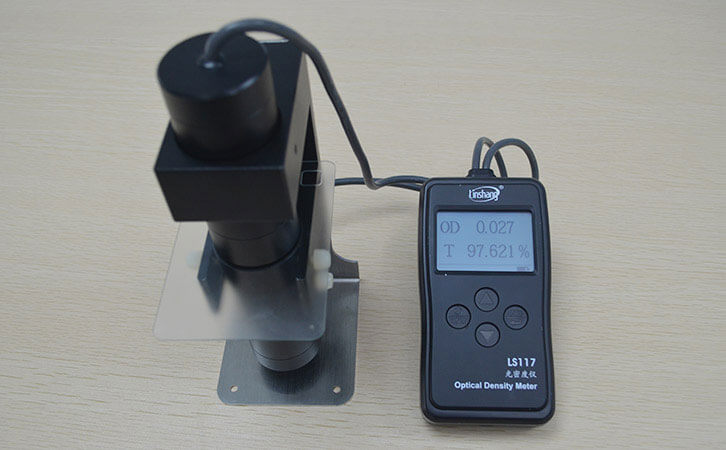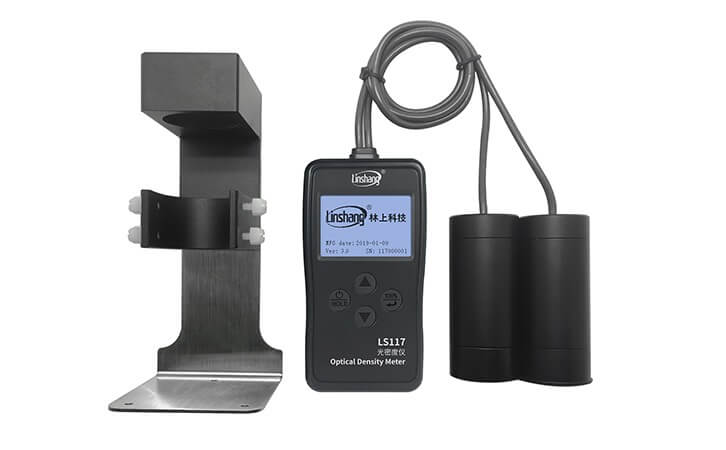Visible Light Transmittance Meter for Testing Matte Cell Phone Film
Everyone usually puts a mobile phone film on a new mobile phone, but there are so many kinds of mobile phone films on the market. Which mobile phone film should I choose for my mobile phone? When choosing a mobile phone film, we should consider our own needs.
If you use a mobile phone to watch videos frequently, it is recommended to purchase a high-definition film. After attaching the mobile phone film, the screen clarity is high. If you are playing games regularly, it is recommended to buy a matte cell phone film.
1. Benefits of matte cell phone film:
The surface is matte texture, anti-fingerprint effect is better, it is not easy to leave fingerprints on the surface and the scratch resistance is good. The matte film can effectively eliminate glare and rainbow lines. There is no glare, so it is more comfortable when watching the screen.
2. Why should we use a visible light transmittance meter to measure the transmittance of a matte cell phone film?
The sharpness of the matte cell phone film is relatively low compared to the high-definition film. After the post, the screen will be slightly darker. Therefore, mobile phone film manufacturers usually need to test and control the light transmittance of the mobile phone film to improve the product quality to bring a good user experience. The mobile phone film with good light transmission performance has a relatively high definition and a better sense of use.
3. How to choose a good visible light transmittance meter?
Matte cell phone films are usually made from matte material. If you use a normal visible light transmittance meter, the data obtained is not accurate. Because the matte material is a diffuse transmission material, the light passes through the matte material and most of the transmitted light is scattered. Ordinary visible light transmittance meters cannot receive most of the scattered light. We recommend Linshang LS117 visible light transmittance meter which adopt the diffuse transmission principle to measure the light transmission of the matte cell phone film.
4. Linshang visible light transmittance meter principle
LS117 visible light transmittance meter uses the diffuse transmission principle. When light passes through a rough surface transmission material (such as frosted glass), the transmitted light diffuses. And there is no regular transmission macroscopically, which is called diffuse transmission [1]. If the light shines on a light-transmitting material with good diffusivity (such as opalescent glass, etc.), the transmitted light will spread in all directions and be evenly distributed in the entire hemispherical space. This is called isotropic diffuse transmission (formerly known as uniform diffuse transmission).
Linshang optical density meter
Diffuse transmission light path design
CIE photopic luminosity function
Two measurement modes
Linshang LS117 optical density meteris an instrument that can measure both optical density and light transmittance. The optical density meter can test the optical density test of aluminized film, film, X-ray film, lens ink and other materials. The light transmittance test of opalescent translucent materials and frosted matte materials, such as zirconia, opalescent acrylic and so on. The optical density meter can pass the inspection of Chinese national metrological institute.
- Linshang Insulated Glass Unit Measuring Tools
- Spectacle lens anti-blue light detection---blue-violet light transmittance meter
- Measurement of Optical Density
- Difference of LS116 Transmission & LS117 OD Meter
- Difference between LS116 and LS117 Light Transmittance Meter
- What’s the Difference Between Point Light and Parallel Light Transmittance Meter

